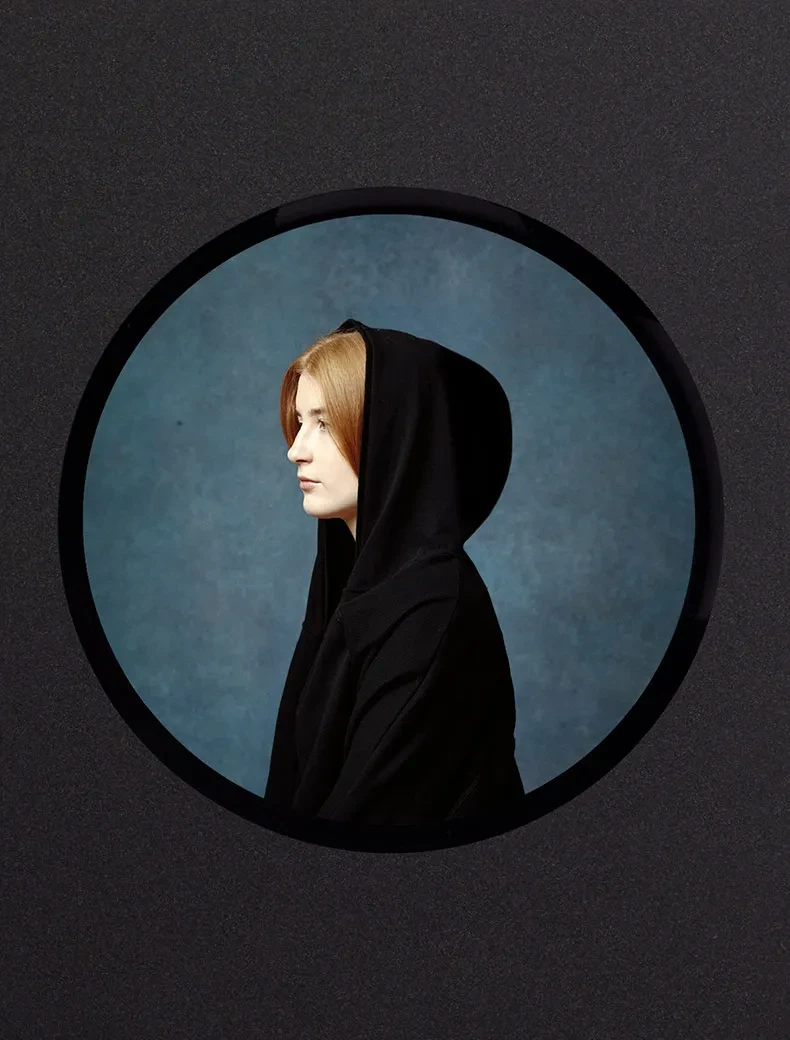
Artist Bettina von Zwehl's series of photographic portrait miniatures, inspired by 16th century works of art, is on display in the Queen's House.
Artist Bettina von Zwehl has built an international reputation for her subtle, distinctive photographic portraits.
This HLF funded commission offers the artist’s response to portraits of Queen Elizabeth I, on display in the Queen’s House. Bettina has created seven portrait miniatures of young women from Thomas Tallis School, Kidbrooke, recorded at a moment when they are making crucial decisions about their futures in the workplace or in higher education.
We spoke to Bettina about miniatures as an artform and the techniques she employed to create these unique photographic miniatures.
Portrait miniatures draw you close.
They shut out the world around you. At the same time, they can exude a sense of power over the viewer.
Looking at portrait miniatures feels quite intimate, especially if you get to handle the object and contemplate the sitter in the palm of your hand.
I especially love miniatures made by artists, like Hans Holbein, Nicholas Hilliard or Isaac Oliver during the 16th century.
Creating the fiction of the pose.
Light is really important. I used a single light source so the sitter is effectively in the spotlight, and stands out against the Renaissance blue background.
Posture is also very important. The sitter needs to be in an exact, specific position and I use a tripod to give a stillness that helps me create the fiction of the pose.
The sitter has to concentrate and be in the moment. It helps to keep the session short so sitters don’t lose interest and momentum.

Less is more.
What they wear is essential. I provided the outfits for every girl and this also changed how they felt about themselves in their sitting.
I stayed clear of teenage fashion trends, patterns, logos, and bright colours. Equally, I reduced jewellery and makeup to a minimum. So every accessory included in the portrait becomes more meaningful.
I styled the girls in black with a slight nod to Renaissance fashion in some of the images, like the squared neckline in some of the tops, or the oversized black hoody which brings to mind the cape of a Renaissance monk.
I did play around with objects for the sitters to hold, but in the end I chose to keep it to the bare minimum.
It’s important everything is in place when working with so little.
When you work with film, every frame counts.
Working with film is my preferred brush, I like the quality and the depth of having film as an original source.
I don’t want long photo sessions, diluted with lots of shots. Using film slows you down a bit, you can’t just fire away. So I make everything work in one shot and don’t experiment a lot because I know what is needed.
There is also an interesting psychological effect on the sitter when using film – they can’t view the results on a screen during or after the session. So they don’t know what they look like until the portrait is complete.
Portraiture is not a tool to reveal truth.
My portraits don’t show the true, real young women. The small format of my portraits, the reduced palette in which the girls are represented, combined with a pose which is orchestrated yet free from sentimentality or vanity will, I hope, allow viewers to see each girl more clearly.
Elizabeth I must have been aware of this and used her knowledge to construct images of herself that told the stories she wanted the public to see.
Looking pretty was not her priority. Elizabeth commissioned complex portraits of herself to be used as propaganda and to convey an image to her people where she would appear powerful and fierce.
She achieved this through her impeccable posture, power dressing, her flaming red hair, chalky makeup, symmetry and of course the use of symbolism embedded in every portrait.
Maybe young women today are also trying to convey an image of themselves through social media, which is much harder to control than a painted portrait or a reproduction of it.
The miniatures are currently on display in the Queen’s House, alongside historic portraits painted by Cornelius Johnson of Charles I’s three children: Prince Charles II, Prince James and Princess Mary.
#armadaportrait